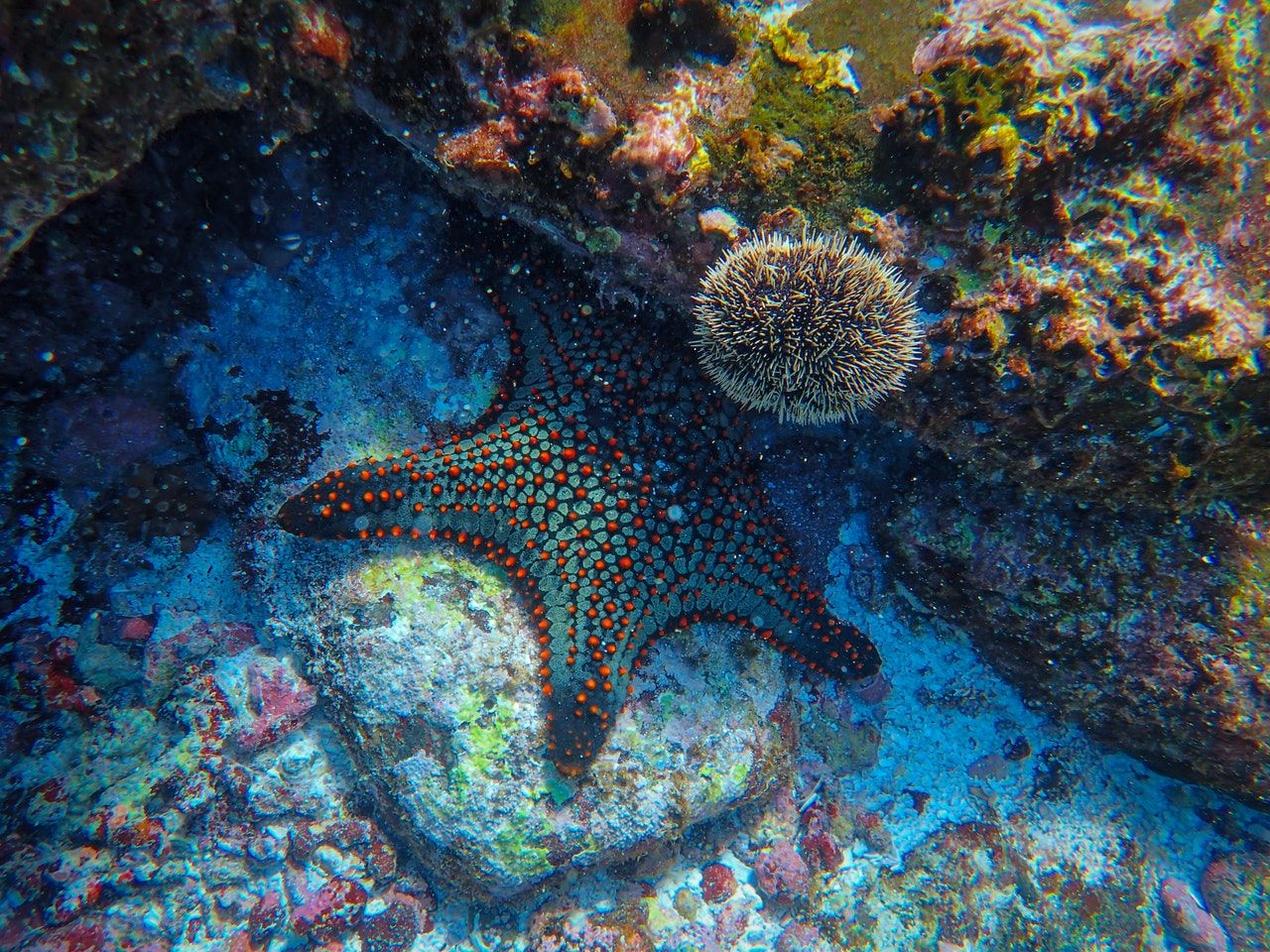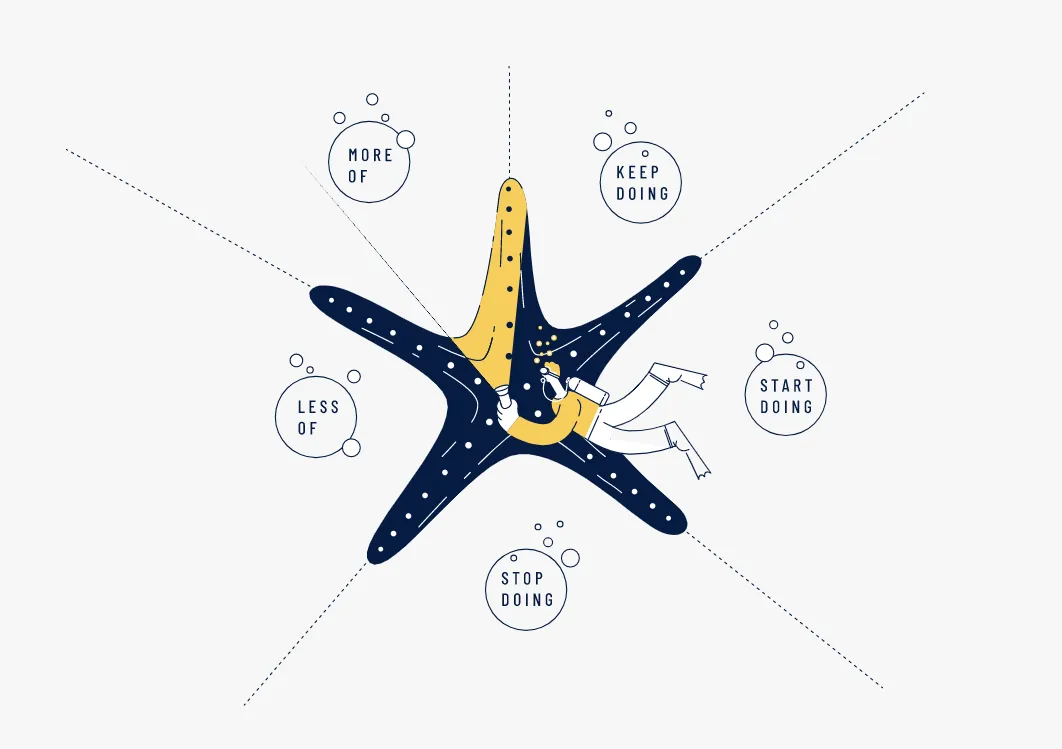
The Starfish Retrospective is also known as the starfish technique, starfish method for sprint retrospectives and other variations. It’s a simple and powerful tool to boost visualization, anchor analytical skills, and improve decision-making during retrospective meetings.
Here’s why you should seriously consider including it into your Agile ceremonies as a way to ensure that you are always running productive retrospectives that your team can look forward to.
The Starfish technique was developed in 2006 by Patrick Kua, technology leader, author, and keynote speaker. Kua’s template is relatively new, compared to other more familiar retro formats like the Fishbone retro. However, that hasn’t prevented it from proving itself as an effective addition to any Agile team’s arsenal.
The Starfish retro format relies on a deep analysis of behaviours that are prevalent among the members of the team and continually impact the work process either positively or negatively.
By raising open-ended queries about the past as well as the future state of the team, this method of questioning encourages teams to take an honest look at their behaviors during the previous timebox of work and link them to process problems or successes.
Team members are invited to consider what they believe they need to:
Identify activities that do not bring value to the team or to the customer.
In short: activities that bring unnecessary wastes into the process and stall the group’s progress. For example: “STOP spending too much time on individual weekly reports that are not being reviewed. They take up too much of our time.”
Raise ideas that the team wants to experiment with and bring into their process. All fresh ideas are welcome whether they are based on previous experience or an insightful article. For example: “There is a study that states booking a regular weekly catch up with the customer increases the customer lifetime value (CLV) and I think we should START implementing this approach.”
Highlight activities or practices that team members perceive as impactful and want to keep as part of the process. For example: “During the last Sprint, we found that keeping our daily standups short (no more than 15 minutes) made the meetings more focused and we should KEEP doing that.”
Best practices that the team believes they should emphasize in their daily work and/or perform more often because they are value-generating. For example: “Having an occasional sync with the sales team provides more insights into our work and we should DO MORE OF these.”
Singling out practices for which the effort required to perform them is much bigger than the benefit they bring. For example: “We have many weekly meetings without a clear agenda that sometimes take up to twice the allocated time and we should DO LESS OF these.”
The starfish format is effective in consolidating ideas from large groups and has the potential to keep your retro succinct and to the point even if your Agile team is larger than average.
To run a Starfish retro in person, you’ll need post-its to collect your team’s ideas, everyone in your team in attendance (and we mean, everyone), a pot of coffee to fuel your brainstorming, and a board or table to create the starfish template.

The starfish retro has a further hidden benefit. It’s an equally effective format for co-located teams as it is for remote teams. All you need is the right retrospective tool.
Whether you’re running your starfish retro live or online, teams will begin at the same starting point: idea generation.
All team members will document their ideas as they pertain to the five categories described above. Take at least 20-25 minutes to brainstorm the team’s ideas and give them an opportunity to think deeply about the past period of active work.
Ask each team member to clarify their ideas by reading their notes to the group. Encourage each contributor to categorize their ideas by placing them in or around each of the five arms of the starfish as they present each one.
To prevent the derailment of this meeting, no open discussion about the topics that are being presented is permitted. Time will be carved out for discussion at a later stage.
According to Agile experts, the optimal approach to the idea generation phase of the starfish retro is inviting the team to generate ideas for a single category, present them to the group and only then move on to consider the next category.
However, opening up the format so that team members can contribute ideas to all of the categories at once has also proven effective in capturing unfiltered, spontaneous suggestions as they occur to the team.
To prepare for team discussion, use dot voting or another mechanism of consolidation to identify the most urgent ideas on the board in each category or cluster similar ideas under a common identifier.
Discuss the prominent ideas from each category as a team with facilitation from the Scrum Master or Team Lead. Identify the team priorities and generate at least one actionable solution from each.
Translate these five process improvements into user stories that will make their way into the scope of the next sprint or iteration of work. For example, an internal user story related to process improvement that is generated from a Starfish retro might sound like:
“As a product development team member, I would like to receive a clear agenda for any meeting that I am invited to at least 24 hours in advance so I can come in with a clear intention and help the meeting stay on track within the timebox allotted.”
If you’ve been running retrospectives for a few months now, chances are you’ve already tested out a few different formats to help organize your team’s ideas.
The flexible and engaging Starfish retro format should be next on your list to try. It’s a widely recognized method for consolidating opinions generated within large groups of people and has benefits for both Agile teams working in sprints or continuous flow of delivery (Scrum or Kanban, respectively).
By using the five arms of this template to guide the conversation inside your working group, you have a greater chance of raising the right questions to trigger new team behaviors and impact the morale of your team.
Running your next Starfish retrospective online? In ScatterSpoke, there are two ways for you to do that — a more rigid column-based retro format or a free-form canvas. Both are ready for you out of the box, so your distributed team can hit the ground running, jotting down all their great ideas as they shake away the hesitation to ask (and answer) the tough questions.